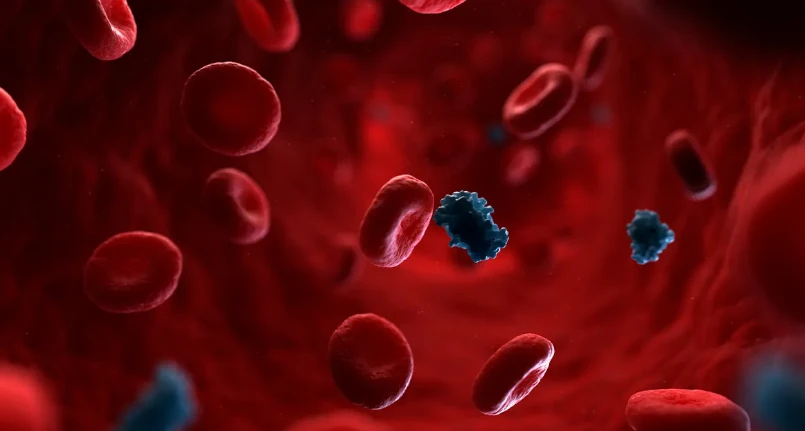Among the various metabolic alterations of nutrients , there is also a wide range of diseases related to sugar metabolism . These disturbances are all very heterogeneous, both for the etiological causes and for the symptoms and relative clinical signs that characterize them; below we will describe the most common pathological forms, the symptoms and the related food therapies.
Galactosemia
N.B. _ In the diet, galactose is found almost exclusively bound to glucose constituting lactose .
Galactosemia is caused by the enzymatic deficiency of galactose-l- phosphate uridintransferase and occurs early in infants who, by drinking milk , require the aforementioned enzyme for the metabolization of galactose obtained from the digestion of lactose.
The symptoms are: vomitingand stunting , then enlarged liver , jaundice , cirrhosis of the liver , kidney failure , seizures , and mental retardation . Food therapy for this sugar disease is simple, i.e. the elimination of all sources of lactose/galactose; the early replacement of breast milk with alternative and homogenized milks without these sugars is necessary until adulthood , when the body develops an alternative way of metabolizing galactose.
There is also another similar form, namely the lack of the enzyme galactokinase, which similarly to the previous one causes an accumulation of galactose in the body. Food therapy is superimposable to that described above.
Glycogen storage
It constitutes a group of sugar diseases characterized by accumulation of glycogen with sometimes anomalous structure; the etiology is determined by enzymatic deficiencies in the metabolism of this sugar .
Glycogen is a ” branched complex carbohydrate reserve” contained in the liver and muscles , which hydrolyzes free glucose; that in the muscles is used for contraction , while that of the liver is responsible for glycemic control . If the liver lacks enzymes for the hydrolysis of glycogen, this accumulates harming the body by promoting glycogenosis.
There are different forms of glycogenosis determined by the deficiency of different liver enzymes :
- Type I glycogen storage disease or von Gierke disease : lack of the enzyme glucose-6-phosphatase which causes hepatic and renal accumulation
- Type III glycogen storage disease: lack of the “debranching” enzyme and consequent structural alteration of glycogen
- Type IV glycogen storage disease: lack of the “ratifying” enzyme, causes liver failure from early childhood .
The food therapy of these diseases aims at maintaining blood sugar; it is of the enteral type (tube) with a prevalence of carbohydrates over proteins . Unfortunately, in forms I and III, dietary measures are NOT sufficient to keep blood sugar constant and it is necessary to take raw corn starch diluted in water ; the latter, thanks to a low glycemic index , is useful for maintaining optimal blood sugar levels.
Mucopolysaccharidosis
Mucopolysaccharidosis is another disease caused by a genetic alteration of sugar metabolism. The related complications are skeletal , nervous (SN) and many other organs ( cornea , heart valves , etc.); it constitutes a vast range of diseases among which the most important is Hurler’s syndrome , due to lack of the enzyme α-L-iduronidase .
Glucose-6-dehydrogenase deficiency
This pathology is determined by the alteration of the “pentose- phosphate cycle ” and is reflected by significantly increasing the membrane fragility of red blood cells .
One of the diseases caused by glucose-6-dehydrogenase deficiency is favism , which manifests itself with haemolysis (destruction of red blood cells) and jaundice 12-48 hours after ingestion of fava beans . In glucose-6-dehydrogenase deficiency, the intake of this legume further weakens the membranes of the erythrocytes and promotes their destruction. It is a hereditary disease of sugar metabolism, it is transmitted with the chromosomeX and the females, who are carriers, are less seriously ill than the males.
Fructosuria
Fructosuria is a disease caused by the metabolism of sugars of rare entity; the defective enzyme is fructose -phosphate- aldolase which prevents the use of dietary fructose.
It can manifest itself with postprandial hypoglycemia following the ingestion of foods rich in fructose (probably due to the increase in insulin ) but, in the pediatric age , it can determine: growth defects , hepastosplenomegaly, jaundice and hyperuricemia following liver damage and renal. Diet therapy is simple and is based on the complete elimination of fructose from the diet.
Sucrose intolerance _
It is a disease caused by the altered metabolism of sugars due to the intestinal deficiency of the sucrase enzyme which can be associated with the deficiency of other enzymes: maltase and isomaltase .
Dietary treatment is based on the elimination of sucrose from the diet.
Hereditary lactose malabsorption
Malabsorption or lactose intolerance is a disease caused by the metabolism of sugars and specifically by the lack or absence of the intestinal enzyme lactase . It can worsen with age and following intestinal mucosal damage such as a bacterial or viral infection .
N.B. _ Hereditary and acquired malabsorption are etiologically different diseases that must be treated with specific food therapies (acquired malabsorption can be improved by the reintroduction of lactose).
Symptoms include vomiting and diarrheaand, in hereditary malabsorption, the therapeutic treatment involves the DEFINITIVE elimination of lactose from the diet.
Diabetes mellitus
Diseases caused by sugar metabolism include type 1 diabetes mellitus and type 2 diabetes mellitus (very different disorders). Diabetes is a multifactorial disease caused by absolute or relative insulin deficiency as well as peripheral resistance to its uptake; it is a chronic disorder characterized by hyperglycemia due to the reduced production of the aforementioned hormone and/or by the concomitance with a more or less significant peripheral resistance. Diabetes mellitus is extremely complex and widespread (type 2 more than type 1) and type 2 frequently integrates into the
metabolic syndrome . The symptoms and clinical signs are different between the two forms of diabetes and also in the different stages of the disease; the cure is dietetic through the control: of the distribution of the carbohydrates , of the glycemic load , of the glycemic index and of the total calories, and the physical activity amplifies the therapeutic effects.
To learn more about the topic, it is advisable to read the dedicated article “Diabetes”, at the address https://www.my-personaltrainer.it/salute/diabete.html .




